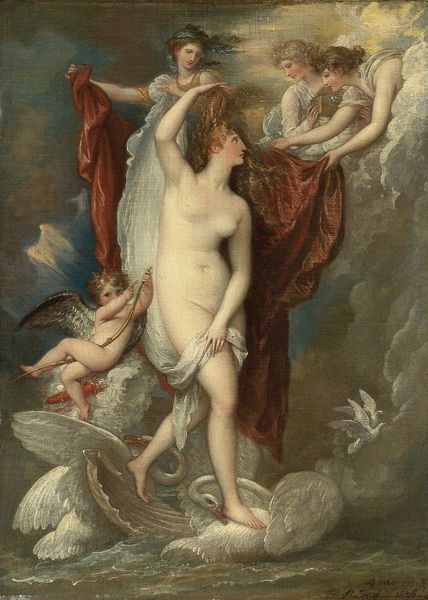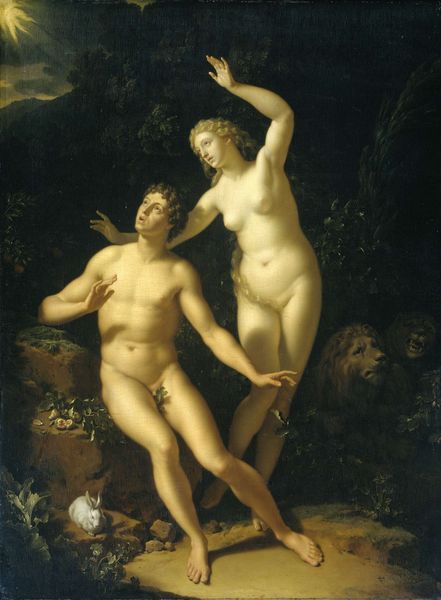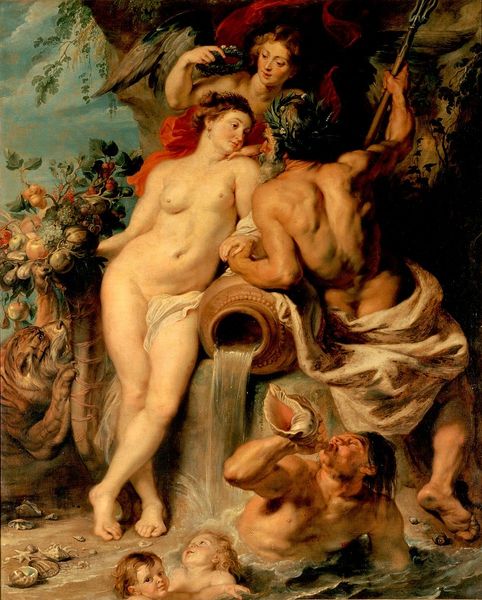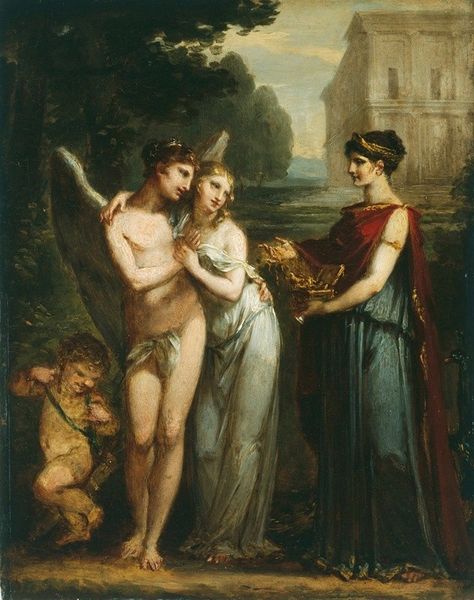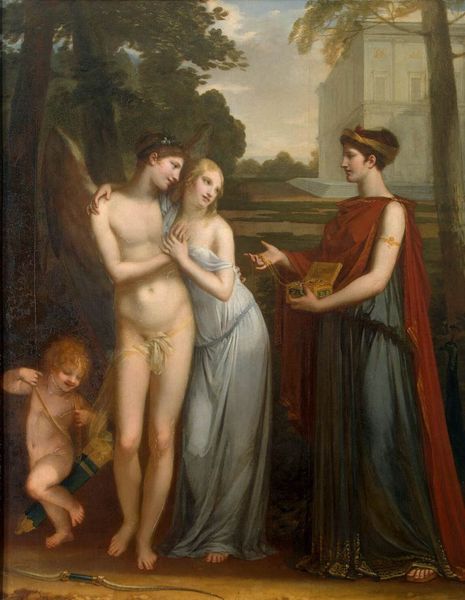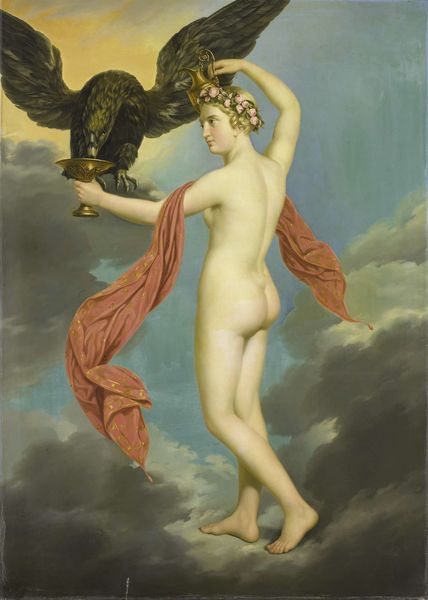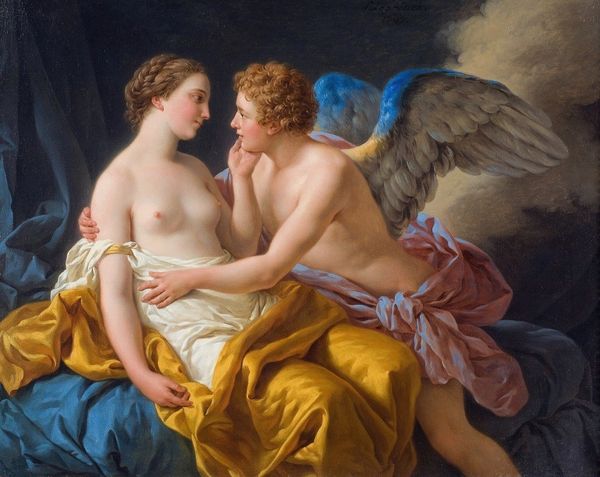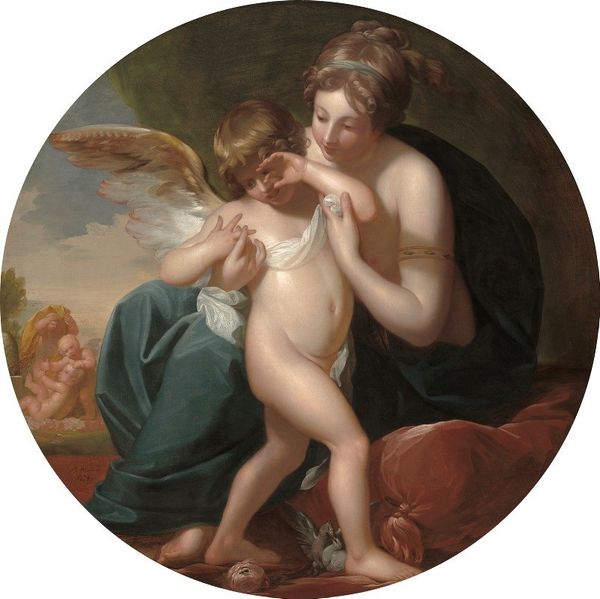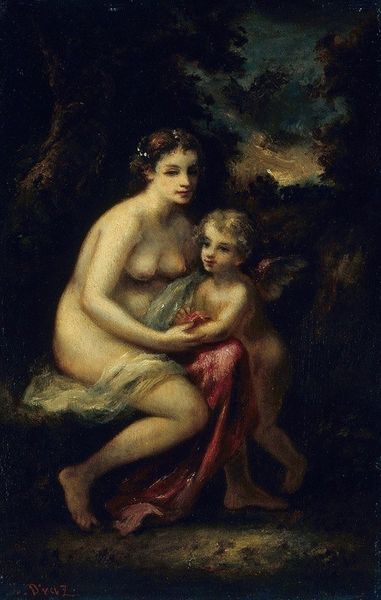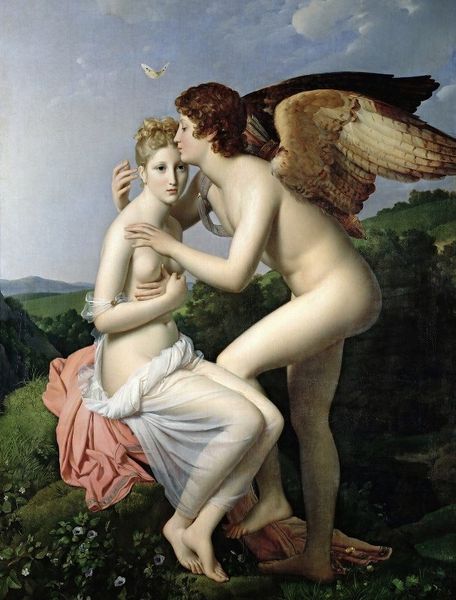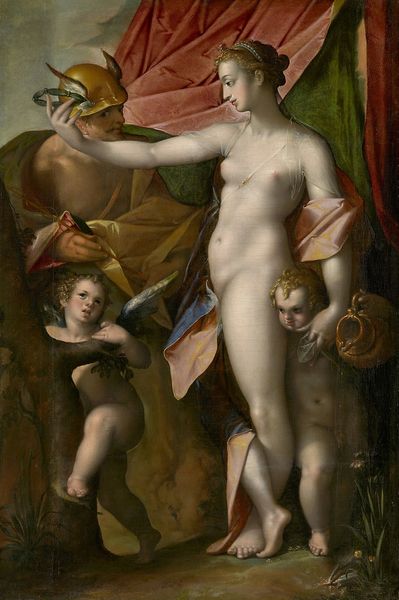
painting, oil-paint
#
neoclacissism
#
allegory
#
painting
#
oil-paint
#
figuration
#
romanticism
#
history-painting
#
nude
Copyright: Public Domain: Artvee
Editor: Here we have "The Union of Love and Friendship," an oil painting created around 1793 by Pierre-Paul Prud'hon. There's a definite sense of classical allegory here, but the soft brushwork feels very romantic. What story do you think this painting is trying to tell? Curator: The political climate in France during the 1790s, even just before and during the Revolution, played a crucial role in shaping artistic expression. Consider the allegorical figures – are they simply representations of Love and Friendship, or could Prud'hon be making a more subtle comment on social or political harmony in a time of immense upheaval? Do you think it would have been commissioned for a private patron with Royal ties or somebody hoping to forge a new type of Republic? Editor: That's fascinating! I hadn't really considered the socio-political undercurrent. So, maybe it’s not just a simple depiction of virtues, but perhaps a plea for unity? Curator: Precisely. Also note Prud'hon’s artistic choices: The Neoclassical ideals would have spoken to the prevailing aesthetics of the time, whilst also carrying associated meanings with emerging political thought. But does it commit to the crisp linearity you'd expect? No! It infuses soft, emotive qualities as you pointed out which arguably speak more to Romantic sensibilities. The question is, is this softening of form a purely artistic one, or perhaps linked to political reconciliation? Editor: I see what you mean! So the way it blends those styles could suggest he was aiming to bridge different ideals through art? Almost making a commentary on their relationship to one another through visual language alone! I really appreciate learning about the history of imagery; how a painter could have played with form to show social meaning. Curator: Exactly! Artists frequently respond to the societal undercurrents. Considering artwork's place within its historical and political moment enriches our comprehension.
Comments
No comments
Be the first to comment and join the conversation on the ultimate creative platform.

